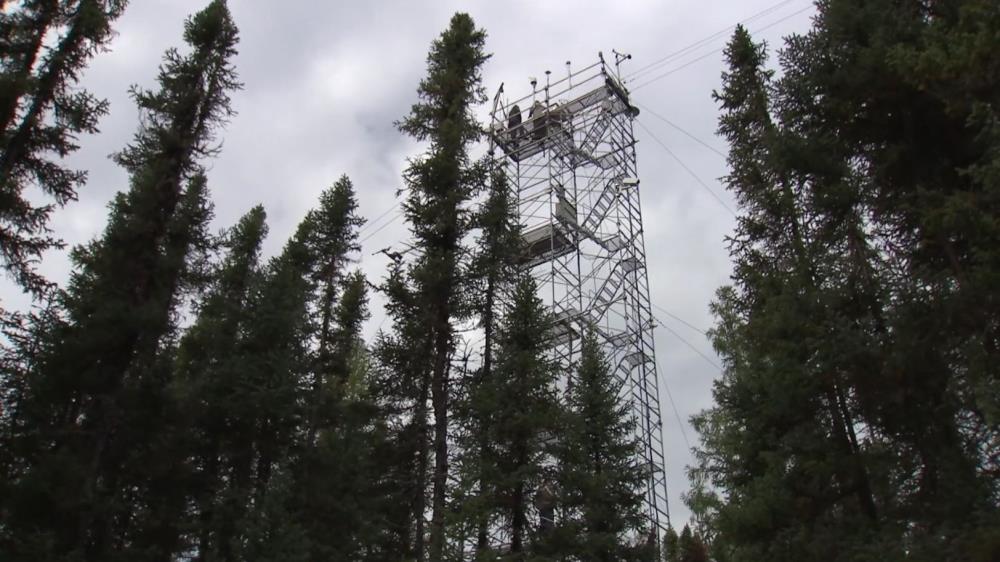
Related items loading ...
Section 1: Publication
Publication Type
Conference Presentation
Authorship
Neary Laura K., Bidwell Mark, Conkin John, Parker Lori, Kindopp Rhona, Wolfe Brent B., Hall Roland I.
Title
Characterizing vulnerability of shallow ponds to climate warming across the whooping crane breeding range, AB/NWT: a new collaborative research program
Year
2022
Publication Outlet
AOSM2022
DOI
ISBN
ISSN
Citation
Laura K. Neary, Mark Bidwell, John Conkin, Lori Parker, Rhona Kindopp, Brent B. Wolfe, Roland I. Hall (2022). Characterizing vulnerability of shallow ponds to climate warming across the whooping crane breeding range, AB/NWT: a new collaborative research program. Proceedings of the GWF Annual Open Science Meeting, May 16-18, 2022.
Abstract
The summer breeding range of the endangered whooping crane (Grus americana) is designated as a Ramsar Wetland of International Importance and lies within a pond-rich region of Wood Buffalo National Park (WBNP). While the survival and growth of the whooping crane population after near-extinction is a story of conservation success, improved monitoring of the entire used and potential nesting area was listed as Recommendation #16 in UNESCO’s 2017 Reactive Monitoring Mission Report to WBNP that identifies threats to WBNP’s world heritage value. In response to the report, the Government of Canada has indicated a substantial investment to enhance research and monitoring via the WBNP Action Plan. One thematic area of the Action Plan is related to conservation of the whooping crane and their nesting habitat. Pond drawdown is thought to increase rates of predation and water-level rise may inundate nests and reduce hatching success, yet there is insufficient hydro-limnological knowledge to anticipate how climate change may alter this critical nesting habitat. A new collaborative research program, partially supported by Northern Water Futures, aims to understand current and past hydro-limnological conditions of these ponds using contemporary methods (water isotope tracers, depth-loggers, water quality surveys) and paleolimnological analyses of sediment cores. Despite covid-related travel restrictions, collaboration among university researchers, Parks Canada Agency and the Canadian Wildlife Service enabled the launching of this research program in 2021. Local Parks Canada employees sampled 50 ponds in June and September for water isotope composition and water chemistry (major nutrients, major ions, DIC, DOC) and installed and retrieved depth loggers from each pond. Formal analysis of these data will be communicated through annual reporting by the university researchers. While the scientific results demonstrate unique and variable hydrological and limnological conditions of the shallow ponds, we wish to highlight the component of this work that is well represented by the theme ‘Knowledge to Action’ at Global Water Future’s Annual Science Meeting of 2022. Emphasis on a collaborative research program was essential to carry out the intensive and logistically challenging multi-day fieldwork in a remote region accessible only by helicopter and has allowed us to expand the capacity for sampling in 2022 through additional funding provided by the WBNP Action Plan. We believe that early involvement of partners and a strong commitment towards relationship-building and trust has laid a critical foundation to help ensure a successful long-term research program with benefits towards maintaining the park’s Outstanding Universal Value.
Plain Language Summary
Section 2: Additional Information
Program Affiliations
Project Affiliations
Submitters
|
Laura Neary | Submitter/Presenter | lkneary@uwaterloo.ca | University of Waterloo |
Publication Stage
N/A
Theme
Water Quality and Aquatic Ecosystems
Presentation Format
10-minute oral presentation
Additional Information
AOSM2022 Northern Water Futures First Author: Laura K. Neary (Department of Biology, University of Waterloo) Additional Authors: Mark Bidwell (Canadian Wildlife Service, Environment and Climate Change Canada); John Conkin (Canadian Wildlife Service, Environment and Climate Change Canada); Lori Parker ( Parks Canada, Wood Buffalo National Park); Rhona Kindopp (Parks Canada, Wood Buffalo National Park); Brent B. Wolfe (Department of Geography and Environmental Studies, Wilfrid Laurier University); Roland I. Hall (Department of Biology, University of Waterloo)


 GWFNet
GWFNet Master
Master Data
Data Research
Research Map
Map
 Advanced
Advanced Tools
Tools
 . . .
. . .
 Metadata Editor
Metadata Editor
 Record List
Record List
 Alias List Editor
Alias List Editor
 Legacy sites
Legacy sites